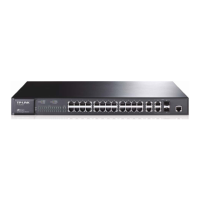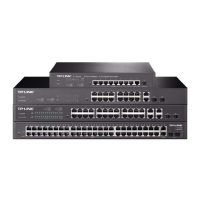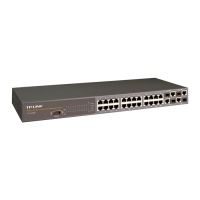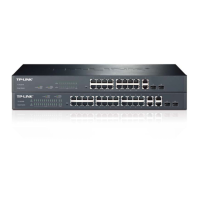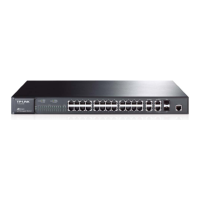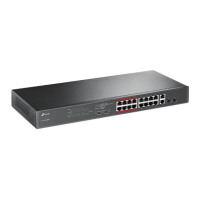Do you have a question about the TP-Link TL-SL3452 and is the answer not in the manual?
Explains how to access the switch's web management interface via a browser.
Describes how to navigate the main setup menu after a successful login.
Covers security measures like access control, SSL, and SSH for enhancing management security.
Covers global STP settings, parameters, and version selection (STP, RSTP, MSTP).
Covers port priority, schedule modes, 802.1P priority, and DSCP priority settings.
Details rate limiting and storm control features to manage traffic flow on ports.
Explains configuring Voice VLANs for voice data streams and managing OUI addresses.
Details creating and managing ACLs, including MAC ACLs, Standard-IP ACLs, and Extended-IP ACLs.
Details manual binding, ARP scanning, and DHCP snooping for IP-MAC address association.
Covers detecting and defending against ARP attacks like gateway spoofing and ARP flooding.
Explains enabling protection against Denial of Service attacks.
Describes port-based network access control using authentication methods and guest VLANs.
Covers managing cluster status, roles, and configuring commander/member switches.
Details the process of entering bootUtil menu and downloading firmware using FTP.
Explains how to access the switch's web management interface via a browser.
Describes how to navigate the main setup menu after a successful login.
Covers security measures like access control, SSL, and SSH for enhancing management security.
Covers global STP settings, parameters, and version selection (STP, RSTP, MSTP).
Covers port priority, schedule modes, 802.1P priority, and DSCP priority settings.
Details rate limiting and storm control features to manage traffic flow on ports.
Explains configuring Voice VLANs for voice data streams and managing OUI addresses.
Details creating and managing ACLs, including MAC ACLs, Standard-IP ACLs, and Extended-IP ACLs.
Details manual binding, ARP scanning, and DHCP snooping for IP-MAC address association.
Covers detecting and defending against ARP attacks like gateway spoofing and ARP flooding.
Explains enabling protection against Denial of Service attacks.
Describes port-based network access control using authentication methods and guest VLANs.
Covers managing cluster status, roles, and configuring commander/member switches.
Details the process of entering bootUtil menu and downloading firmware using FTP.
| Store-and-forward | Yes |
|---|---|
| Maximum data transfer rate | 1 Gbit/s |
| Supported data transfer rates | 10/100/1000 Mbps |
| Networking standards | IEEE 802.3 |
| Switch type | Managed |
| Supported network protocols | SNMP |
| Console port | RS-232 |
| Gigabit Ethernet (copper) ports quantity | 2 |
| Basic switching RJ-45 Ethernet ports quantity | 52 |
| Dimensions (WxDxH) | 440 x 260 x 44 mm |
| Dimensions (W x D x H) (imperial) | 17.3 x 10.2 x 1.7 \ |
| Stackable | - |
| Certification | FCC, CE |
| Storage temperature (T-T) | -40 - 70 °C |
| Operating temperature (T-T) | 0 - 40 °C |
| Storage relative humidity (H-H) | 5 - 90 % |
| Operating relative humidity (H-H) | 10 - 90 % |

